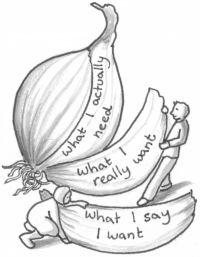This guide will consider how a consensus decision making model can effectively be used in large and small groups.
Consensus is an inclusive and participatory model of decision making and has historically been used by activists since the 1950s. The Latin root of the word is consentire, ‘con’ meaning together and ‘sentire’ meaning to feel. Consensus allows a group to think and feel together about the conclusion that should be reached.
This guide will address
What is consensus?
Why is it preferable to voting?
How to facilitate
Tips and tricks for larger groups
What is consensus?
1) A decision making process that is non-coercive, egalitarian and leaderless.
2) A form of communication that deconstructs hierarchies and builds community.
3) A multiple-step model that requires some advance planning and prior knowledge to execute effectively.
In a nutshell, consensus involves a facilitator who helps the group stay on topic and gives everyone a chance to speak who wants to. A proposal is drafted by the group. This is followed by clarifying questions to ensure everyone understands what is being proposed. Next, concerns can be voiced and discussed. The proposal is modified through this discussion. Once everyone has had a chance to discuss and the group is satisfied by the proposal, there can be consensus where all group members agree.
This guide goes into more detail about how consensus works and how it can be implemented.
Why try consensus?
Voting is competitive, consensus is co-operative.
Everyone has a chance to speak if they want.
Encourages potential and validation of everyone’s ideas.
Gets others to hear new ideas presented by the group.
How to facilitate
The facilitator keeps the meeting running smoothing by identifying proposals, helping formulate an agenda and by calling on speakers in the group. A good facilitator is actively anti-racist, anti-sexist and anti-homophobic and stays as neutral as possible while facilitating. Use this short guide to improve your skills.
A facilitator identifies and addresses any responses from the group. There may be:
Blocks – Used when someone has a major concern with the proposal. If there is a block than an aspect of the proposal goes strongly against why they are a member of the group. Though important to consensus, blocks are rare and the proposal needs to be free of them to pass.
Declaring reservations – someone may have some problems with the proposal but still decide to let it pass.
Standing aside – someone may choose to let the proposal pass, yet not be a part of its implementation.
Direct response – someone may want to comment on something that was just said. This moves them to the front of the line of speakers so they can respond.
Agreement – people like the proposal!
Large vs small
There are different ways of coming to consensus with smaller and larger groups. This chart lists some tips and techniques that can be used.
For larger groups, the consensus process is a little different. It can take longer and hand signals may be used. The common signals used by Occupy can be found here.
For smaller groups, consensus might be urgent. For example, protesters are being arrested and the group has only a few minutes to decide on an action. This quick consensus involves the facilitator simply stating the situation (“the police are here.”)
A block to the proposal in this case typically is because the suggestion is dangerous or will spilt the group (“block use of violence.”) Proposals are taken right away (“Let’s link arms and sit.”)
A stand aside is agreeing to disagree (“I cannot get arrested because I will lose my job.”) The goal in this case is to make the situation clear and take immediate action!
A comprehensive guide to consensus decision making can be found here. Thanks to Seeds for Change!



